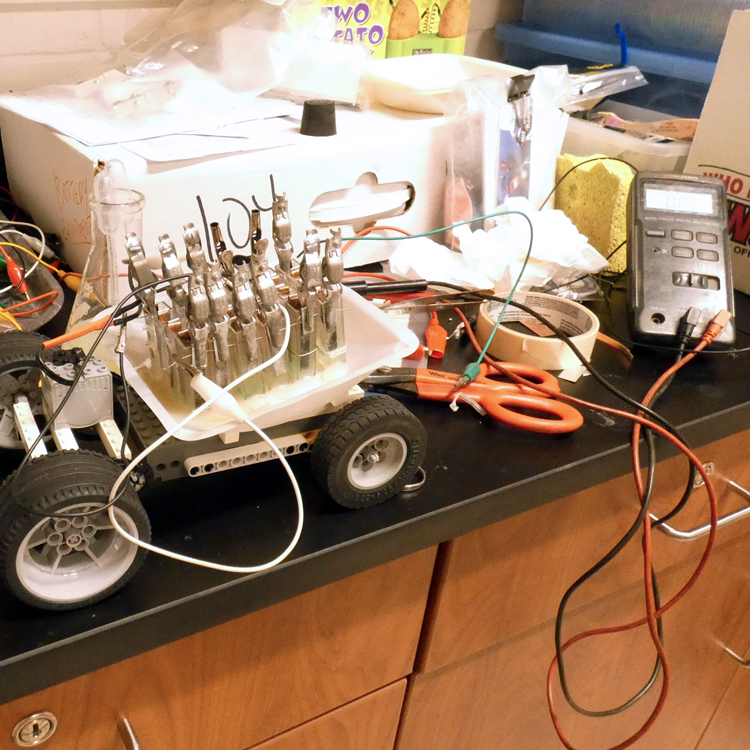During his final semester at ConVal High School, Ben Kriebel accepted a unique challenge for an independent study project: the building of a model car that would be powered by a naturally occurring fuel — lemon juice.
“I started out designing and prototyping the lemon juice-powered car utilizing some Lego parts,” Kriebel said. The overall size and weight of the model had to be considered in relation to the size and weight of its power pack. Even the weight of connecting wires and alligator clips had to be taken into account.
Tire size was important, too, because larger tires would increase weight and inertia in getting the model car rolling while smaller tires might not provide enough grip. In the end, two pairs of differently-sized tires were used.

In addition to keeping the car as light as possible, Kriebel knew that the key to success would be to come up with the right type of battery. The first step in this process was to design a container that would hold the anode (i.e. the negative electrode that undergoes oxidation during the cell discharge), the cathode (i.e. positive electrode consisting of the material that undergoes reduction during the cell discharge), and the electrolyte (i.e. the medium through which ions move from one electrode to the other during the cell discharge).
Next, Kriebel had to research the proper amounts of lemon juice and salt to use in order to achieve the chemical reaction needed to create an electric current strong enough to drive a small electric motor. Using the formula kg·m^2·s^−3·A^−1, the goal was to achieve 1.5 volts of electromotive force. To create battery cells that would be connected in series, Kriebel glued together disposable plastic cuvettes in a 4×6 array.

“I initially used magnesium and copper as electrodes. But this ended up being too harsh of a reaction and produced too much electrical energy in too small of an amount of time.” Clearly, a redesign of the battery component was needed. “From magnesium, I switched to zinc, which does not produce as much voltage. For this reason, I had to increase the cell count in my battery.” More cells would potentially produce more energy but would also weigh down the car. “With everything lined up, I tested the car. Unfortunately, it did not have enough power to turn the wheels.”
After doing some additional research, Kriebel realized that he had the wrong motor, one that did not have the right gear ratio and sufficient torque to overcome the vehicle’s inertia and to put it in motion. “After installing a new, more torque-oriented motor, the car finally moved with just lemon juice!”
Dr. Moira Milne, who served as the faculty advisor for this extended learning opportunity (ELO), was impressed with how Kriebel had worked through the various design problems to achieve a positive outcome. “I have presented this challenge to several chemistry students in the past. Ben is the first student to succeed with this project, which requires a solid knowledge of electrochemistry,” Milne said.
“Ben displayed the traits necessary for success: tenacity, the ability to think under pressure, and the insight to see the fun of this work. His reward is a true sense of accomplishment. His science and engineering work connects well with the field of electric cars, batteries, and alternative energy resources.”
In true engineering fashion, Kriebel is looking towards further improvements to his lemon car design. “The plan, for now, is to completely revamp the electrodes — the copper and zinc pieces — because they end up corroding over time. This reduces the efficiency of the battery. I am hoping to overcome this and make the car move even faster.”
After graduating from ConVal High School in June, Kriebel plans to attend Virginia Tech in the fall where he will study engineering.

